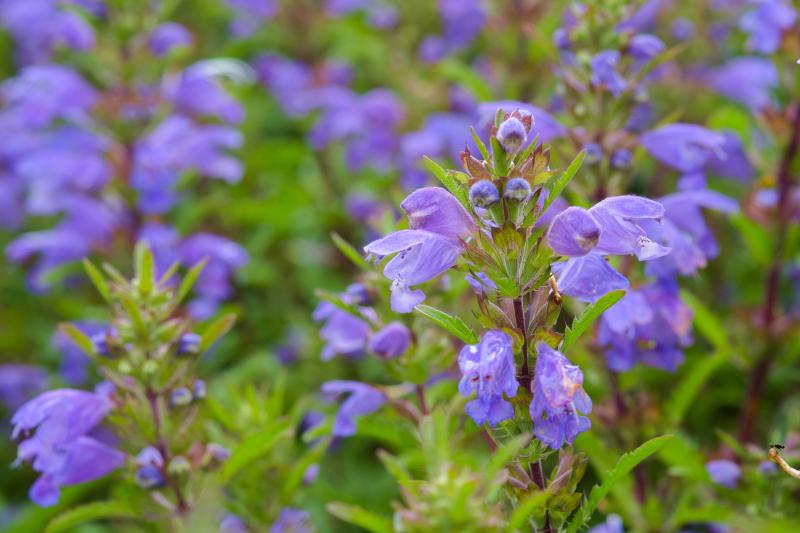Invite a dragon from your garden for tea
The game Dungeons & Dragons came out in 1974, marking the beginning of modern role-playing games and the RPG industry. There are even high school Dungeons & Dragons clubs across the country. Dragons, after all, fascinate us.
Moldavian Dragonhead (Dracocephalum moldavica) is a dragon you can grow in your garden. This is a friendly dragon, one you can even have for afternoon tea.
It is also called Moldavian Balm and is native to Eurasia. The plants grow in low mounds with narrow leaves resembling rosemary. The long-lasting flowers are brilliant purple and seem too big for the plant, and they are indeed shaped like the toothed head of a dragon. Bees and pollinators love these flowers as a great source of nectar.
This is an outstanding herb for making lemon-flavored, caffeine-free tea. Moldavian dragonhead tea was used in traditional medicine to treat common colds. The tender leaves and young shoots can be used fresh or dried. The leaves, with their strong lemon taste, make a perfect substitute for fresh lemons. This beautiful plant is also grown commercially to extract its essential oil.
Seeds are available from specialty sellers such as Baker Creek Heirloom Seeds, www.rareseeds.com, or by mail at 2278 Baker Creek Road, Mansfield, MO 65704.
Sow the seeds directly on the soil surface two weeks before the last frost. These seeds need light to germinate, so gently press them into the soil but do not cover. The seeds will germinate in 7-14 days, and they take about 80 days to bloom from seed. The fast-growing plants quickly reach their full height of 18 inches.
Dry the flowers and leaves by hanging them upside down in a shady area out of direct sunlight and away from heating vents. An unheated garage or porch works fine. Unlike lemon balm, this herb keeps its strong lemon aroma even when dried. Besides tea, try using the leaves and flowers in a refreshing lemonade. Use the leaves as a substitute for lemon balm to flavor desserts and fish dishes. Add young leaves to tossed salads. Moldavian dragonhead is even used to make herbal liqueurs.
Feel free to harvest bunches during the summer, since cutting will encourage more blooms. You can easily get two or three harvests every summer. Because this is an open-pollinated herb, you can save the seeds, and they will grow true to form next year. Let the plants go to seed beginning in August, and allow the seedheads to dry on the plants before cutting them to collect the seeds.
Take a break from Dungeons and Dragons and plant your own real dragons in the form of Moldavian dragonhead. This carefree, easy-to-grow plant will reward you with huge flowers and the makings for herbal teas or even a tasty, toasty liqueur. It may not be magic, but you might fall under its spell.


















































